Welcome to the ultimate automotive showdown: hybrid vs non-hybrid cars!
It’s like choosing between a smartphone and a flip phone, or an iPhone and a high-end Samsung. Okay, maybe not that dramatic, but it’s a decision that’ll impact your wallet, your carbon footprint, and possibly your stress level.
Let’s look at hybrid vs non-hybrid cars, comparing the two to give you an idea on which one would suit you best.
Differences Between Hybrid and Non-Hybrid Cars: Pros and Cons
Whether you’re a daily commuter battling rush hour traffic, a weekend road tripper, or just someone who needs to haul groceries without breaking a sweat, this age-old (well, decade-old) debate has probably crossed your mind.
But don’t worry. It will be clear after you read this comparison.
Let’s get started!
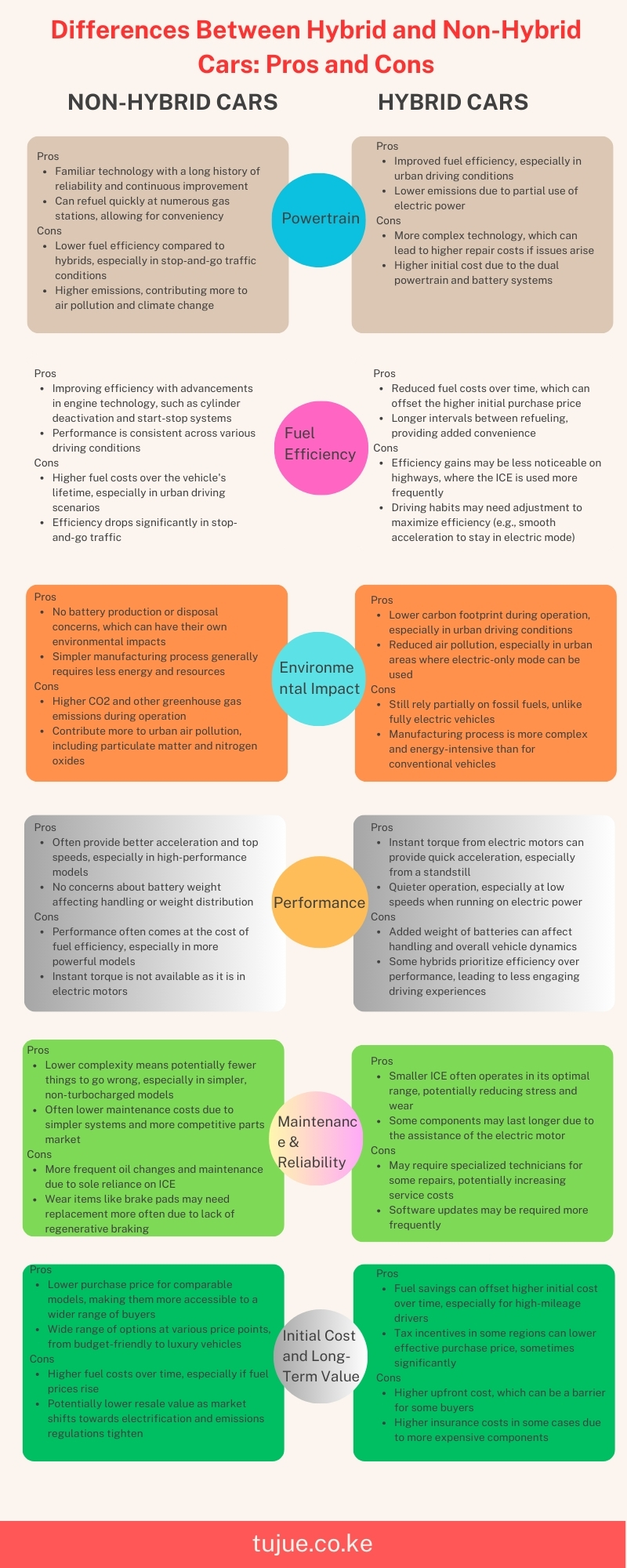
Differences Between Hybrid and Non-Hybrid Cars Infographic
1. Powertrain
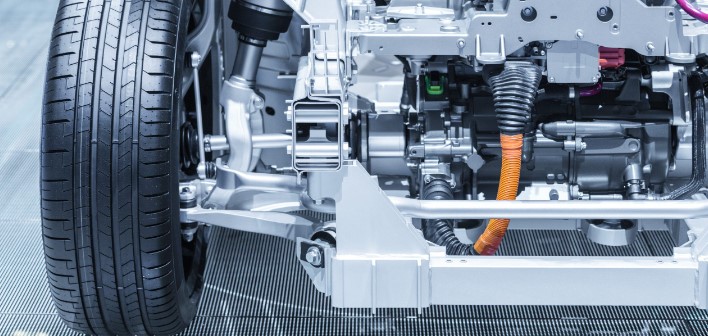
The powertrain is the heart of any vehicle, determining how it moves and performs. The main difference between hybrid and non-hybrid cars lies in their powertrain configurations, which significantly impact their operation, efficiency, and environmental footprint.
Non-Hybrid Cars:
Non-hybrid cars, also known as conventional vehicles, rely solely on an internal combustion engine (ICE) that burns fossil fuels like gasoline or diesel. This time-tested technology has been the backbone of the automotive industry for over a century.
Pros:
– Familiar technology with a long history of reliability and continuous improvement
– Widespread availability of parts and service centers, making maintenance and repairs more accessible and potentially less expensive
– Can refuel quickly at numerous gas stations, allowing for long trips without extensive planning
Cons:
– Lower fuel efficiency compared to hybrids, especially in stop-and-go traffic conditions
– Higher emissions, contributing more to air pollution and climate change
– Dependence on fossil fuels, making them vulnerable to oil price fluctuations
– Less energy-efficient, with a significant portion of energy lost as heat
Hybrid Cars:
Hybrid vehicles combine an ICE with one or more electric motors and a battery pack. This dual powertrain allows for more efficient energy use and reduced emissions. There are different types of hybrids, including:
Here’s how Lexus hybrid technology works:
1. Parallel hybrids: The most common type, where both the ICE and electric motor can drive the wheels directly.
2. Series hybrids: The electric motor drives the wheels, while the ICE acts as a generator to charge the battery.
3. Plug-in hybrids (PHEVs): Can be charged from an external power source and typically offer a longer all-electric range.
Pros:
– Improved fuel efficiency, especially in urban driving conditions
– Lower emissions due to partial use of electric power
– Regenerative braking captures energy usually lost during deceleration
– Smaller ICE can be used, reducing weight and improving efficiency
Cons:
– More complex technology, which can lead to higher repair costs if issues arise
– Higher initial cost due to the dual powertrain and battery systems
– Battery replacement costs in the long term, though battery longevity has improved significantly
2. Fuel Efficiency and Economy
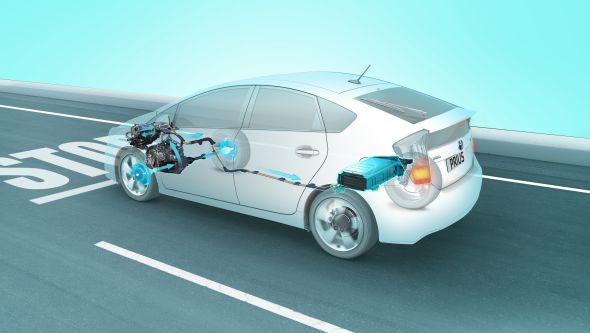
Fuel efficiency is a critical factor for many car buyers, affecting both running costs and environmental impact. Hybrid and non-hybrid cars approach fuel efficiency in different ways, leading to significant variations in real-world economy.
Non-Hybrid Cars:
Conventional vehicles typically have lower fuel efficiency compared to hybrids, especially in urban driving conditions. However, advancements in engine technology, such as direct injection and turbocharging, have led to improvements in recent years.
Pros:
– Improving efficiency with advancements in engine technology, such as cylinder deactivation and start-stop systems
– No need to adapt driving habits for optimal efficiency; performance is consistent across various driving conditions
– Some modern non-hybrids can achieve impressive highway fuel economy, rivaling hybrids in long-distance cruising
Cons:
– Higher fuel costs over the vehicle’s lifetime, especially in urban driving scenarios
– More frequent refueling stops, which can be inconvenient and time-consuming
– Efficiency drops significantly in stop-and-go traffic
– Larger engines often needed for adequate performance, reducing overall efficiency
Hybrid Cars:
Hybrids are designed to maximize fuel efficiency by utilizing both electric and gasoline power. They excel in situations where conventional cars are least efficient, such as city driving and stop-and-go traffic.
Pros:
– Significantly better fuel economy, especially in city driving where electric power can be used more frequently
– Reduced fuel costs over time, which can offset the higher initial purchase price
– Longer intervals between refueling, providing added convenience
– Some plug-in hybrids offer the ability to complete short trips entirely on electric power
Cons:
– Efficiency gains may be less noticeable on highways, where the ICE is used more frequently
– Driving habits may need adjustment to maximize efficiency (e.g., smooth acceleration to stay in electric mode)
– Real-world fuel economy can vary significantly based on driving conditions and how often PHEVs are charged
– Cold weather can reduce the efficiency of the battery, potentially impacting overall fuel economy
3. Environmental Impact
Hybrid and non-hybrid cars have significantly different environmental footprints, not just in terms of emissions but also in manufacturing and end-of-life considerations.
Non-Hybrid Cars:
Conventional vehicles generally have a larger carbon footprint due to their reliance on fossil fuels. However, stringent emissions regulations have forced manufacturers to develop cleaner ICEs.
Pros:
– Improving emissions standards are making newer models cleaner, with some meeting ultra-low emission vehicle (ULEV) standards
– No battery production or disposal concerns, which can have their own environmental impacts
– Potential for use of biofuels or synthetic fuels in the future, which could reduce overall carbon footprint
– Simpler manufacturing process generally requires less energy and resources
Cons:
– Higher CO2 and other greenhouse gas emissions during operation
– Contribute more to urban air pollution, including particulate matter and nitrogen oxides
– Continued reliance on fossil fuels, a non-renewable resource
– Less efficient energy use, with a significant portion lost as heat
Hybrid Cars:
Hybrids produce fewer emissions due to their partial use of electric power and more efficient use of the ICE. However, While these cars produce fewer em emissions, some experts believe that making them is actually more costly to the environment.
According to a specialist at Cambridge Centre for Environment, Energy and Natural Resource Governance, Florian Knobloch:
“Producing electric vehicles leads to significantly more emissions than producing petrol cars. Depending on the country of production, that’s between 30% to 40% extra in production emissions, which is mostly from the battery production.”
Pros:
– Lower carbon footprint during operation, especially in urban driving conditions
– Reduced air pollution, especially in urban areas where electric-only mode can be used
– Align with increasingly stringent environmental regulations in many countries
– Can serve as a bridge technology between conventional ICEs and fully electric vehicles
Cons:
– Battery production and disposal have environmental concerns, including mining of rare earth metals and potential for improper disposal
– Still rely partially on fossil fuels, unlike fully electric vehicles
– Manufacturing process is more complex and energy-intensive than for conventional vehicles
– Environmental benefits can be reduced if electricity for plug-in hybrids comes from high-emission sources
4. Performance
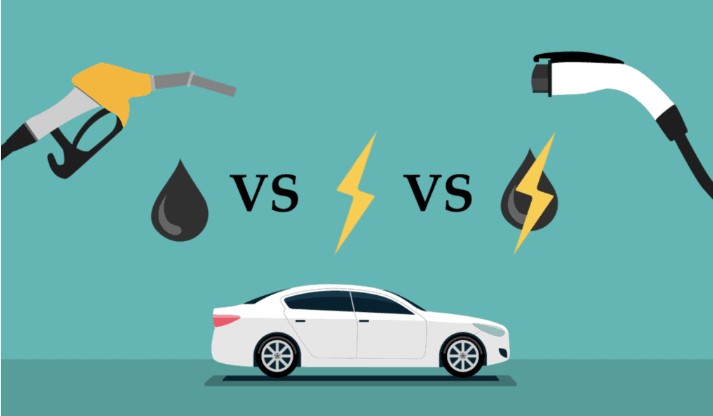
Vehicle performance is a multifaceted concept that includes acceleration, top speed, handling, and overall driving experience. Hybrid and non-hybrid cars offer different performance characteristics due to their distinct powertrain configurations.
Non-Hybrid Cars:
Traditional vehicles often offer more straightforward performance characteristics, with a direct connection between engine output and vehicle response.
Pros:
– Often provide better acceleration and top speeds, especially in high-performance models
– Simpler drivetrain can result in a more engaging driving experience for enthusiasts, with direct throttle response
– No concerns about battery weight affecting handling or weight distribution
– Wide range of performance options, from economical commuters to high-powered sports cars
Cons:
– Performance often comes at the cost of fuel efficiency, especially in more powerful models
– Instant torque is not available as it is in electric motors
– Noise and vibration from the ICE can be more noticeable, especially during hard acceleration
Hybrid Cars:
Hybrid performance varies widely depending on the specific model and type of hybrid system. Some hybrids are designed for maximum efficiency, while others offer high performance.
Pros:
– Instant torque from electric motors can provide quick acceleration, especially from a standstill
– Some high-performance hybrids offer impressive power and efficiency, combining powerful ICEs with electric boost
– Quieter operation, especially at low speeds when running on electric power
– Potential for improved traction and handling due to the ability to precisely control power delivery to different wheels in some systems
Cons:
– Added weight of batteries can affect handling and overall vehicle dynamics
– Some hybrids prioritize efficiency over performance, leading to less engaging driving experiences
– Continuously Variable Transmissions (CVTs) used in many hybrids can feel less responsive than traditional automatics
– Performance can decrease as battery charge depletes, especially in plug-in hybrids
5. Maintenance and Reliability
The long-term ownership experience of a vehicle is greatly influenced by its maintenance requirements and overall reliability. Hybrid and non-hybrid cars differ significantly in these aspects due to their distinct technologies and components.
Here’s a deeper overview:
Non-Hybrid Cars:
Conventional vehicles have well-established maintenance procedures and widely available parts, thanks to decades of development and a vast service infrastructure.
Pros:
– Lower complexity means potentially fewer things to go wrong, especially in simpler, non-turbocharged models
– Mechanics are generally more familiar with traditional powertrains, making diagnostics and repairs more straightforward
– Often lower maintenance costs due to simpler systems and more competitive parts market
– Well-understood long-term reliability, with many models known for lasting hundreds of thousands of miles
Cons:
– More frequent oil changes and maintenance due to sole reliance on ICE
– Wear items like brake pads may need replacement more often due to lack of regenerative braking
– Potential for more mechanical issues as the vehicle ages, especially related to the engine and transmission
Hybrid Cars:
Hybrid technology introduces additional components that require specialized knowledge, but also offers some unique advantages in terms of wear and tear.
Pros:
– Potential for reduced wear on engine and brakes due to regenerative braking and electric motor assistance
– Many hybrids have proven to be very reliable over time, with some taxi fleets favoring them for their longevity
– Smaller ICE often operates in its optimal range, potentially reducing stress and wear
– Some components, like transmission fluid, may last longer due to the assistance of the electric motor
Cons:
– May require specialized technicians for some repairs, potentially increasing service costs
– Potential for expensive battery replacement after warranty period, though this is becoming less common as battery technology improves
– More complex systems mean more potential points of failure, especially in electrical and cooling systems
– Software updates may be required more frequently to maintain optimal performance
6. Initial Cost and Long-Term Value
The financial aspect of car ownership extends beyond the purchase price, encompassing long-term costs and resale value. Hybrid and non-hybrid vehicles present different equations in terms of initial investment and long-term economic benefits.
Non-Hybrid Cars:
Conventional vehicles typically have a lower upfront cost due to simpler technology and economies of scale in production.
Pros:
– Lower purchase price for comparable models, making them more accessible to a wider range of buyers
– Wide range of options at various price points, from budget-friendly to luxury vehicles
– Lower insurance costs in many cases due to simpler technology and lower replacement costs
– Potential for lower financing costs due to the lower initial price
Cons:
– Higher fuel costs over time, especially if fuel prices rise
– Potentially lower resale value as market shifts towards electrification and emissions regulations tighten
– May be subject to higher taxes or restrictions in some areas due to emissions
– Fewer tax incentives compared to hybrid or electric vehicles
Hybrid Cars:
Hybrids often come with a price premium but can offer long-term savings through reduced fuel consumption and other benefits.
Here’s a funny representation of hybrid cars
Pros:
– Fuel savings can offset higher initial cost over time, especially for high-mileage drivers
– Potentially higher resale value due to increasing demand for efficient vehicles and longer-lasting components
– Tax incentives in some regions can lower effective purchase price, sometimes significantly
– Lower operating costs, including potential savings on maintenance (e.g., brake wear)
Cons:
– Higher upfront cost, which can be a barrier for some buyers
– Potential for expensive battery replacement in the long term, though this is becoming less common
– Higher insurance costs in some cases due to more expensive components
– Resale value can be affected by perceptions about battery life and replacement costs
Cost of Hybrid Cars vs. Gas Cars
Comparing the costs of hybrid and conventional gas-powered cars involves considering both upfront and long-term expenses. Here’s a detailed breakdown:
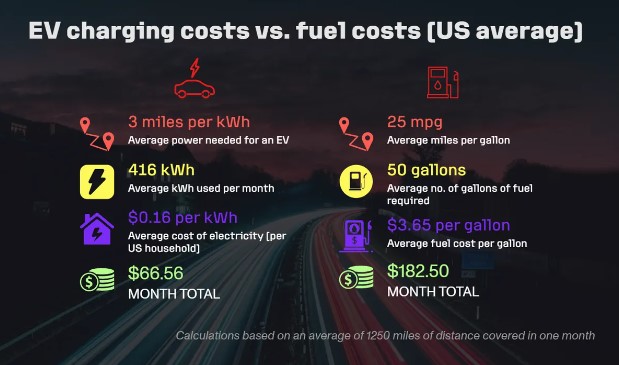
Source/Credit: CNET
1. Initial Purchase Price
Let’s look at the actual costs/figures:
a) Hybrid Cars:
– Generally more expensive due to advanced technology
– Price premium typically ranges from $3,000 to $8,000 over comparable gas models
– Luxury and high-performance hybrids can have even higher premiums
b) Gas Cars:
– Lower initial cost due to simpler technology
– Wide range of prices available, from budget to luxury models
2. Fuel Costs
How about the fuel? This goes without saying – Hybrid cars take the day.
a) Hybrid Cars:
– Significantly lower fuel costs, especially in city driving
– Can save 20-35% on fuel compared to similar gas models
– Savings increase with higher gas prices and more miles driven
b) Gas Cars:
– Higher fuel costs, especially for larger or more powerful vehicles
– More vulnerable to fluctuations in gas prices
3. Maintenance Costs
This is the tricky parts. Take a look:
a) Hybrid Cars:
– Lower brake maintenance costs due to regenerative braking
– May require specialized (and potentially more expensive) service
– Battery replacement can be costly but is increasingly rare with modern hybrids
b) Gas Cars:
– More frequent oil changes and general engine maintenance
– Parts and service widely available, often at competitive prices
Should I Buy a Hybrid Car?
Deciding whether to buy a hybrid car depends on various factors related to your lifestyle, driving habits, and priorities. Here’s a comprehensive guide to help you make an informed decision:
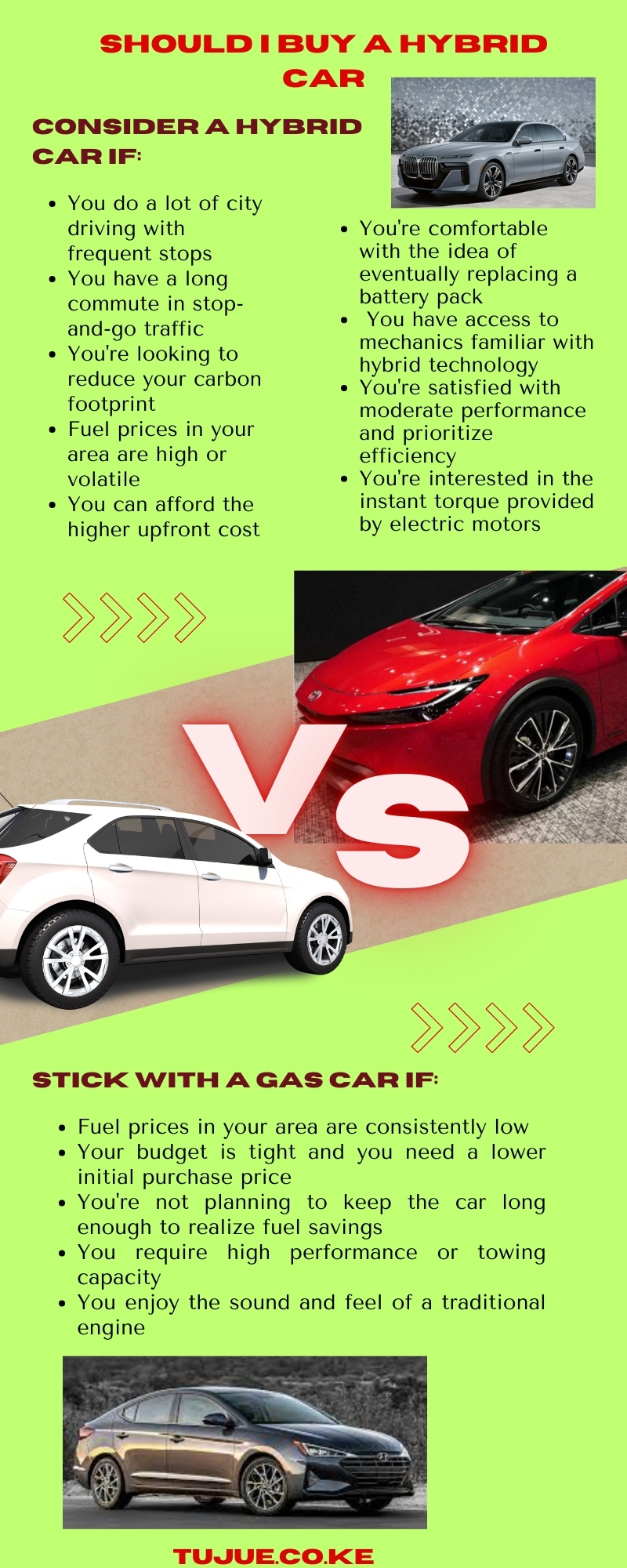
Should I Buy A Hybrid Car Infographic
Consider a hybrid car if:
1. You do a lot of city driving with frequent stops
2. You have a long commute in stop-and-go traffic
3. You’re looking to reduce your carbon footprint
4. Fuel prices in your area are high or volatile
5. You can afford the higher upfront cost
6. You’re comfortable with the idea of eventually replacing a battery pack
7. You have access to mechanics familiar with hybrid technology
8. You’re satisfied with moderate performance and prioritize efficiency
9. You’re interested in the instant torque provided by electric motors
Stick with a gas car if:
1. Fuel prices in your area are consistently low
2. Your budget is tight and you need a lower initial purchase price
3. You’re not planning to keep the car long enough to realize fuel savings
4. You require high performance or towing capacity
5. You enjoy the sound and feel of a traditional engine
Verdict: Which Car is Better?
Let’s start with a simple video from a car expert:
Choosing between a hybrid and non-hybrid car is a difficult decision that depends on a variety of factors including personal driving habits, local infrastructure, environmental concerns, and budget. Both types of vehicles have their strengths and weaknesses:
Non-hybrid cars offer familiarity, lower upfront costs, and a tried-and-tested technology. They’re suitable for those who prioritize initial affordability, enjoy traditional driving dynamics, or frequently travel long distances where hybrid benefits are less pronounced.
Hybrid cars, on the other hand, shine in fuel efficiency, especially in urban environments, and offer lower emissions and potentially lower long-term costs. They’re ideal for environmentally conscious buyers, those with mostly city driving habits, and individuals looking to reduce their fuel consumption without going fully electric.
By carefully weighing the pros and cons outlined in this guide, you can make an informed decision that best suits your needs and preferences in the ever-evolving automotive landscape.

